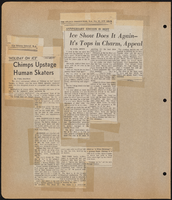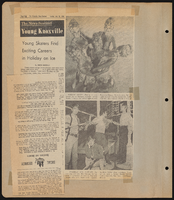Search the Special Collections and Archives Portal
Search Results

Meeting minutes for Consolidated Student Senate University of Nevada, Las Vegas, October 4, 1984
Date
Archival Collection
Description
Text

Eric Mendoza oral history interview: transcript
Date
Archival Collection
Description
Oral history interview with Eric Mendoza conducted by Holly O'Donnell on November 29, 2021 for Reflections: The Las Vegas Asian American and Pacific Islander Oral History Project. In this interview, Eric Mendoza shares his family's chain migration history from Manila, Philippines to the United States and his difficult immigration and naturalization process once arriving in America in 1996. He talks about what brought him to live in Las Vegas, Nevada, his education and professional pursuits, what his life is like in the United States compared to that of the Philippines, and the lives of his eight siblings. Eric Mendoza discusses the historical past of the Philippines, the infrastructure in place there, and government corruption. He also speaks to Filipino traditions and festivals, food and customs, his cultural identity, and assimilating to American culture.
Text

Junior Fonotisatele oral history interview: transcript
Date
Archival Collection
Description
Oral history interview with Junior Fonotisatele conducted by Cecilia Winchell and Stefani Evans on November 10, 2021 for Reflections: The Las Vegas Asian American and Pacific Islander Oral History Project. Junior discusses his Samoan background and the importance of strong family values. He talks about his early years in Utah and California before moving to Las Vegas where he attended and graduated from the University of Nevada, Las Vegas. Junior shares his employment history as a bodyguard for Floyd Mayweather, an entrepreneur of a clothing brand, and an investor into a range of ventures including security, solar energy, and mental health. He concludes with a discussion of Samoan cultural celebrations, his religion, and the significance of his tattoos.
Text

Photograph of pickers at work harvesting celery plants on the Iki Ranch near Logandale, Nevada, June 4, 1947
Date
Archival Collection
Description
Men harvesting celery on the Iki ranch near Logandale, Nevada.
Transcribed Notes: Bureau of Reclamation typed notes appended to back of photo: Boulder Canyon Project, Nevada Region 3 "Pickers" at work harvesting celery plants on the IKI Ranch near Logandale, Nevada. Raising celery plants is a relatively new type of irrigated specialty farming in southern Nevada. Water from the Muddy River is used to irrigate the fields. Twenty million celery plants were harvested from the 60 acres planted this season. The plants were shipped to the neighboring western states.
Image
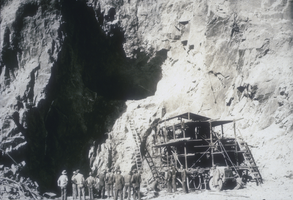
Slide of the construction phase of Hoover Dam, November 18, 1931
Date
Archival Collection
Description
Image
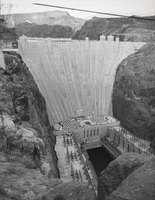
Photograph of Hoover Dam powerhouse during a Young Presidents' Organization party, March 9, 1971
Date
Archival Collection
Description
Image
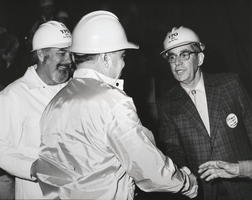
Photograph of a party held by the Young Presidents' Organization at Hoover Dam, March 9, 1971
Date
Archival Collection
Description
Image
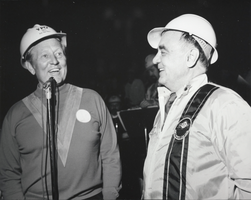
Photograph of Ellis L. Armstrong and Art Linkletter at a Young Presidents' Organization party at Hoover Dam, March 9, 1971
Date
Archival Collection
Description
Image

